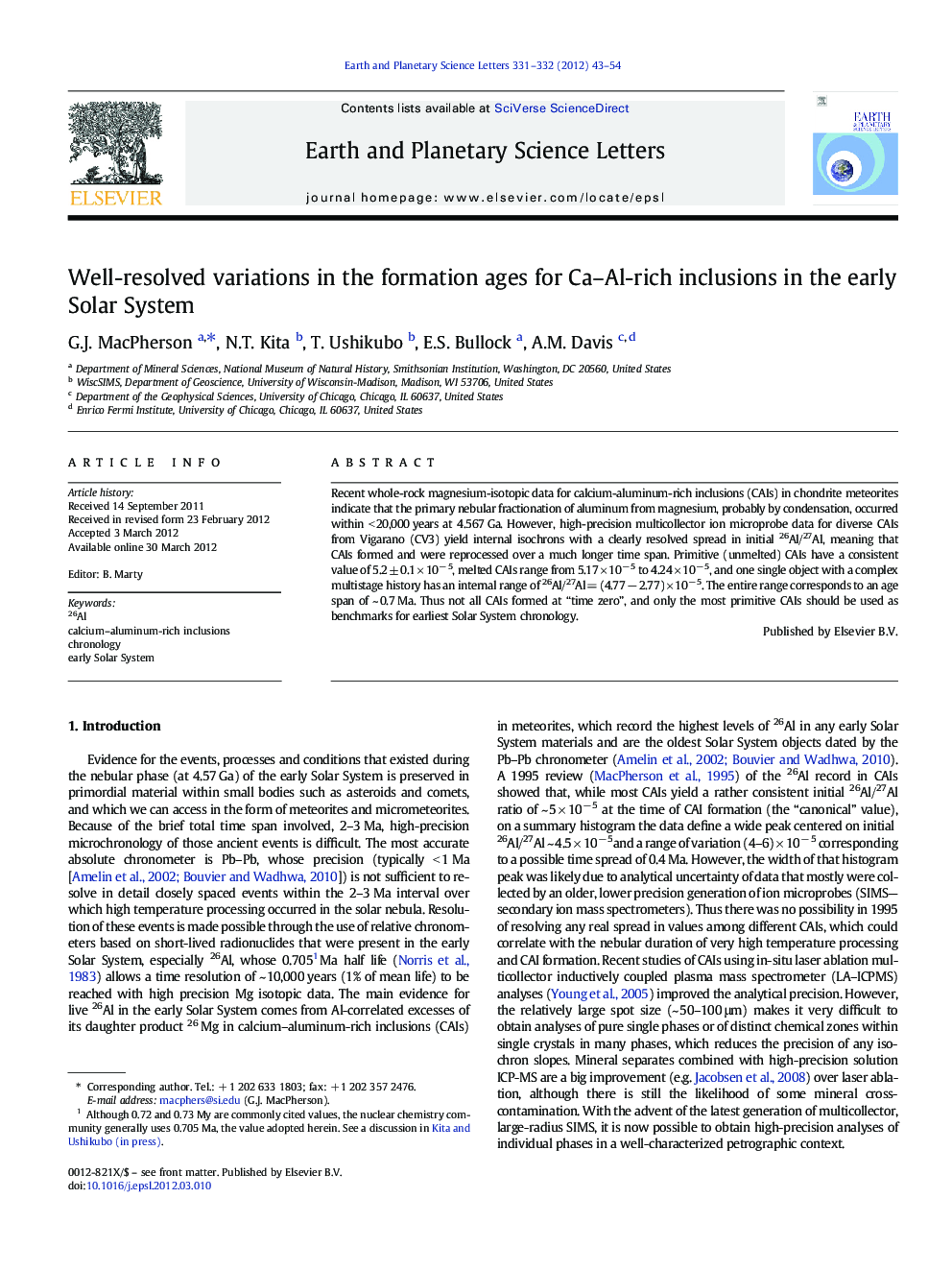| Article ID | Journal | Published Year | Pages | File Type |
|---|---|---|---|---|
| 4677470 | Earth and Planetary Science Letters | 2012 | 12 Pages |
Recent whole-rock magnesium-isotopic data for calcium-aluminum-rich inclusions (CAIs) in chondrite meteorites indicate that the primary nebular fractionation of aluminum from magnesium, probably by condensation, occurred within < 20,000 years at 4.567 Ga. However, high-precision multicollector ion microprobe data for diverse CAIs from Vigarano (CV3) yield internal isochrons with a clearly resolved spread in initial 26Al/27Al, meaning that CAIs formed and were reprocessed over a much longer time span. Primitive (unmelted) CAIs have a consistent value of 5.2 ± 0.1 × 10− 5, melted CAIs range from 5.17 × 10− 5 to 4.24 × 10− 5, and one single object with a complex multistage history has an internal range of 26Al/27Al = (4.77 − 2.77) × 10− 5. The entire range corresponds to an age span of ~ 0.7 Ma. Thus not all CAIs formed at “time zero”, and only the most primitive CAIs should be used as benchmarks for earliest Solar System chronology.
► Ca–Al-rich inclusions in chondrites have a well-resolved spread in initial 26Al/27Al. ► The range corresponds to an age span of ~ 0.7 Ma. ► Only the most primitive CAIs should be benchmarks for early Solar System chronology.
